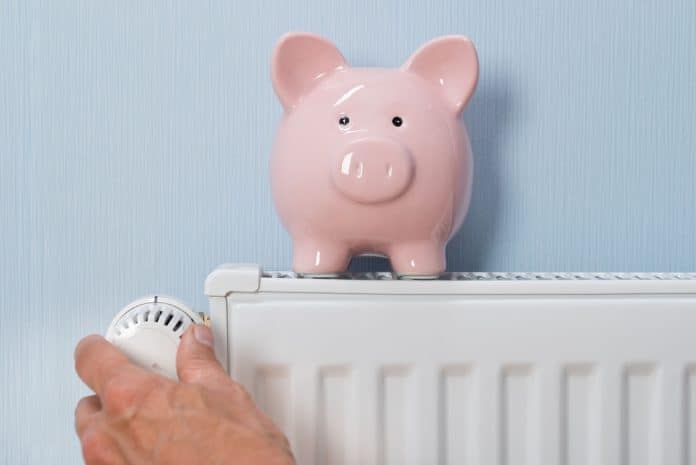
Everyone knows that utility bills can negatively influence your finances, especially if your energy is not working well. You might be slowly freezing inside your home and your heat system decides to stop working. (Sound familiar)? Or maybe, your home is hiding a rusty pipe that makes your faucet groan and the water might smell funny. If this has ever happened to you, then you are not alone. Also, you do not have to use bottled water to brush your teeth anymore. You can just apply for Low Income Home Energy Assistance.
The federal government provides assistance in every aspect of your life, and energy is not an exception. This is why the federal government developed a program that will help with home repairs and utility bills. Always one step ahead, the Low Income Home Energy Assistance (LIHEAP) offers financial relief for families and individuals with low incomes to prevent any disasters that are related to home repairs.
If you need help with home repairs and energy costs, then you should apply for the Low Income Home Energy Assistance Program. But, you have to make sure that you meet the conditions that allow you to qualify as a recipient. With all welfare programs, you will not receive assistance on a silver platter. But, it is still helping, nonetheless.
What Does The Low Income Home Energy Assistance Program (LIHEAP) Do?
There are several types of utility bill assistance programs that Americans can reach out to. However, the most common assistance program for energy efficiency is the Low Income Home Energy Assistance Program (LIHEAP). This program helps low income families, so you can be able to pay for home energy services and utility bills at an affordable rate. You may qualify to receive assistance from the Program. But, you will have to meet the Low Income Home Energy Assistance Program income conditions. One of the program’s main objectives is to decrease the risk that comes with unsafe cooling and heating practices.
The federal government funds the Low Income Home Energy Assistance Program (LIHEAP). But, the state you live in determines the coverage and budget of the program. The state also decides who receives these benefits. With the Low Income Home Energy Assistance Program (LIHEAP), it provides assistance with the following:
- Cooling and heating energy costs.
- Financial assistance for low-income families and individuals on utility bills
- Home repairs
- Emergency support during hard times, like if your utilities suddenly shut off.
Each state is different, and you will find that the process varies from one state to another. But, many states provide assistance with home energy repairs. You could find assistance in the weatherization of homes, as well. States offer all of these energy assistance options to provide financial relief to low-income families. Additionally, states want to try to decrease the ongoing costs of energy per household.
All funds you receive from Low Income Home Energy Assistance Program (LIHEAP) can be used for the above home energy repairs. You cannot use the funds for sewer and water bills, unless you use the water for an air conditioner.
How Does The Low Income Home Energy Assistance Program Help Me?
The federal government funds the Low Income Home Energy Assistance Program (LIHEAP). This program provides financial relief for energy costs to low income families and individuals. But, make sure that you qualify to receive help from the program. The LIHEAP provides one-time funds, which are meant to assist you with temporary energy assistance. State governments implement the Low Income Home Energy Assistance Program. If you want to contact someone about the program, then you should reach out to your state’s Department of Social Services.
Your Low Income Home Energy Assistance Program office will give you all the information you need on the program. They will tell you about the conditions to qualify, the application process, and what you need to do when you apply. The program office will also answer all of your questions; you should ask as many questions as you want. Keep in mind that they will no longer accept applications once federal funding runs out for the program. But, this depends on your state and its administration of the Program.
How Can I Become Eligible To Receive Benefits for the LIHEAP?
If you are interested in applying for the Low Income Home Energy Assistance Program, then here is something you should know. In the case that you already qualify for certain welfare programs, you automatically qualify for LIHEAP. These welfare programs include the Supplemental Nutrition Assistance Program (SNAP), Supplemental Security Income (SSI), or Temporary Assistance for Needy Families (TANF). However, as we mentioned above, each state varies from another. You need to double check that you qualify before you do anything.
In order to receive the benefits of the program, you need to meet the eligibility requirements to qualify. The two most important aspects that determine your eligibility are your household size and your income level. You should make sure that you fall within the income level that correlates to your household size. (Do not worry, you will find a chart or two that will explain it for you).
Remember that if you surpass the maximum income level, then the program immediately and automatically disqualifies you. If you qualify as a recipient, then you should move to the next step. The next step is finding out how to apply. Fun fact, the program accepts tenants as eligible recipients, as well. You do not need to own your home to become eligible.
Can I Apply for Low Income Home Energy Assistance Online? (Yes, you can!)
If you want to apply for the LIHEAP and you have made sure that you are qualified, then you should contact your local LIHEAP office. However, you can apply for the benefits online, as well, depending on your state. Regardless, make sure that you are in constant contact with your local LIHEAP office throughout the application process.
The first thing you should do when you apply is to locate your local LIHEAP office. You do not have to scour the Earth; you can just use a Local Income Home Energy Assistance Program office locator. This will find for you the nearest local office in your state. After you have contacted the local LIHEAP office, you should request energy assistance. Again, keep in mind that the administration of this Program in each state varies. Some states could set more eligibility requirements for household sizes and annual income levels. But, that depends on what the state requires from you.
What you might definitely need in one state could be unnecessary in another state. This is why it is important that you remain in contact with your local LIHEAP office. You will be able to understand how each state administers the program from your local LIHEAP office.
One Important Factor of Applying to the LIHEAP is the Paperwork
Similar to all welfare programs, you will need to submit documents. These documents are easy to get; you probably have it in a drawer somewhere. The documents that you will need to apply are the following:
- Proof of Identification
- Verification of address
- Your citizenship status
- Social Security Number
- Proof of income (tax records or payment stubs are included, but they need to be recent)
- Bank statements and\or financial statements
- Evidence that you currently receive government or private benefits of any kind
- Proof of assistance required
The final document that you need to submit is evidence of why you will need assistance. This proof of required assistance includes energy bills, weatherization estimates, or required home repairs that are energy-related. All of the documents that you submit to the Program will define whether you qualify and how much financial assistance you will receive.
If a member of your household participates in a welfare program, then there is a chance that you automatically qualify for the Low Income Home Energy Assistance Program.
What If I Do Not Qualify For The Low Income Home Energy Assistance Program?
In the case that you do not meet the eligibility requirements or your application was not accepted, you can look for alternatives. The best course of action is to check with your home energy provider and find out if there are any moratoriums that you can use to your advantage. These moratoriums are becoming more and more common these days, to provide financial relief to struggling Americans.
You can also talk to your home energy provider and discuss how to pay your back-to-school utility bills. This depends on your home energy provider. If you are lucky, then they can be a little lenient with you on late payments. You could even create a payment plan that you can afford and they agree to, which will help you pay for all of the late payments. That way, you will be able to alleviate your debt from your energy bills and you will not have to worry about your power shutting off in the near future.
Another aspect that you might need help with is the weatherization of your home. If you are facing weatherization in your home, then you can always apply for the federal Weatherization Assistance Program. The Weatherization Assistance Program provides financial assistance to low-income Americans and helps them improve their energy efficiency. If you meet the conditions of the Program and you are qualified, then you can receive financial relief that you can use to improve your home. Additionally, this will seriously decrease your utility bills.
Conclusion: There Is Help In Every Corner
In the case that you are struggling with your energy and utility bills, you do not have to worry so much anymore. The federal government funds a program that provides one-time funds to offer temporary assistance on home energy and repairs. The program is called the Low Income Home Energy Assistance Program (LIHEAP), which was established in 1981.With the LIHEAP, you can receive financial relief on cooling and heating energy costs, utility bill assistance for low income families, home repairs, and emergency support during tough times. State governments administer and manage the Low Income Home Energy Assistance Program is implemented by state governments, so implementation and management varies from one state to another.
In order to receive assistance, you will need to meet the conditions to qualify for the program. The two main factors that define your eligibility are your income and household size. Your household size and the maximum income level per year allow you to find out whether you are qualified for the LIHEAP or not. But, you should keep in mind that if you are already receiving federal benefits from another program, then there is a possibility that you automatically qualify for LIHEAP. You should really consider this Program, if you need any housing repairs or you struggle with the energy costs of your home.





















